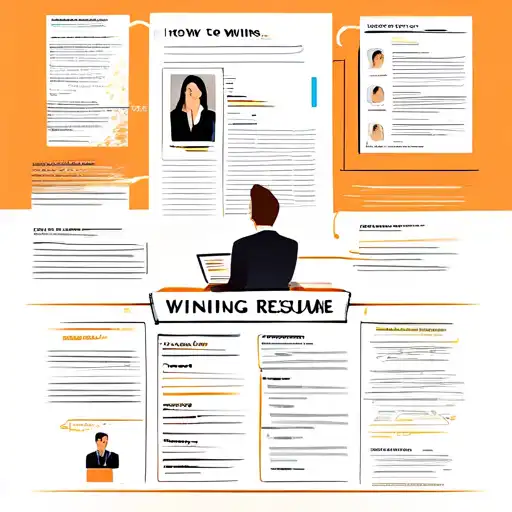Introduction
In today's competitive job market, having a winning resume is more important than ever. It's your first opportunity to make a lasting impression on potential employers. This guide will walk you through the steps to craft a resume that not only highlights your skills and experiences but also stands out from the crowd.
Understanding the Basics
Before diving into the specifics, it's crucial to understand what makes a resume effective. A well-structured resume should be concise, tailored to the job you're applying for, and free of errors. It should also include relevant keywords to pass through Applicant Tracking Systems (ATS).
Step 1: Choose the Right Format
There are three main resume formats: chronological, functional, and combination. The chronological format is the most common and is preferred by employers as it highlights your work history. The functional format focuses on skills and is ideal for those with gaps in employment. The combination format, as the name suggests, combines elements of both.
Step 2: Craft a Compelling Summary
Your resume should start with a professional summary or objective. This section should be a brief snapshot of your career goals and what you bring to the table. Make it compelling and tailored to the job description.
Step 3: Highlight Your Experience
When listing your work experience, focus on achievements rather than duties. Use action verbs and quantify your accomplishments whenever possible. For example, "Increased sales by 20% in Q1" is more impactful than "Responsible for sales."
Step 4: Showcase Your Skills
Include a skills section that lists both hard and soft skills relevant to the job. Be honest about your proficiency levels and prioritize skills mentioned in the job posting.
Step 5: Education and Certifications
List your educational background and any certifications that are relevant to the position. If you're a recent graduate, you might want to place this section above your work experience.
Step 6: Additional Sections
Depending on your background, you might include sections for volunteer work, languages, or publications. These can provide a more rounded view of your capabilities and interests.
Step 7: Proofread and Format
Before sending your resume, proofread it multiple times to catch any typos or grammatical errors. Also, ensure the formatting is consistent and professional. Use bullet points for readability and keep the design simple.
Conclusion
A winning resume is your ticket to landing interviews. By following these steps, you can create a resume that effectively showcases your strengths and makes a strong impression on hiring managers. Remember, your resume is a living document—update it regularly as you gain new skills and experiences.
For more career advice, check out our guide on how to ace your job interview.
